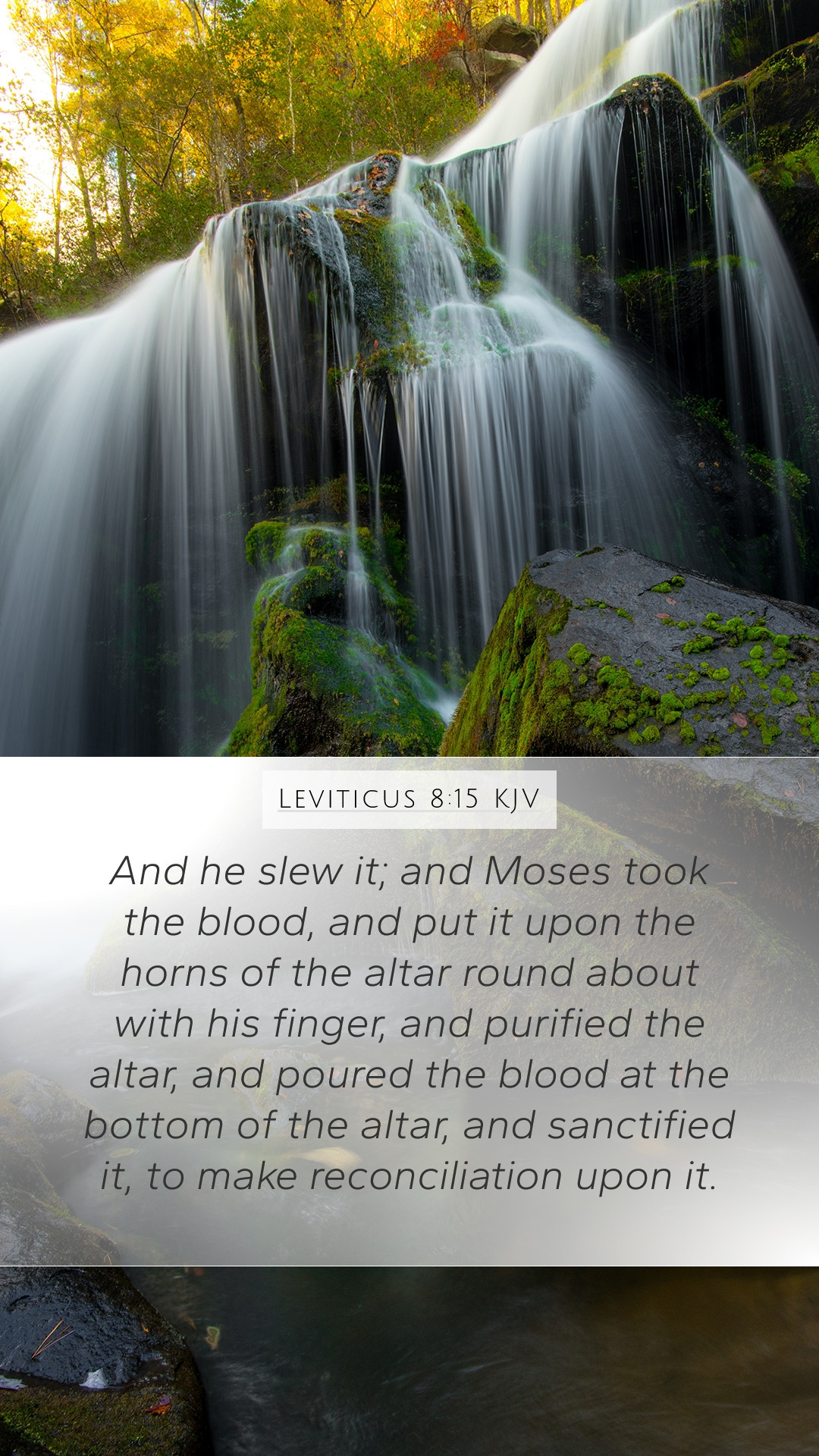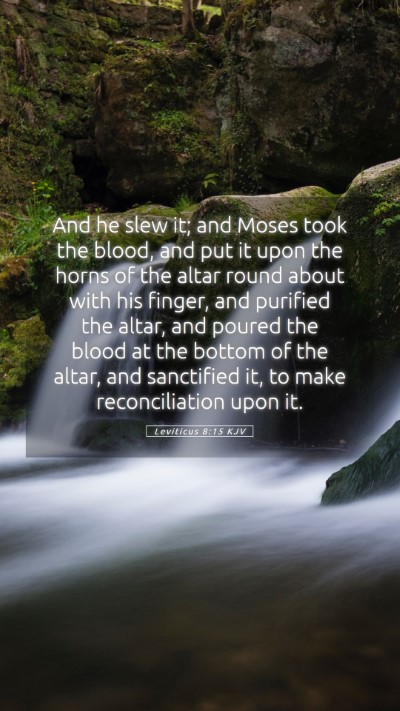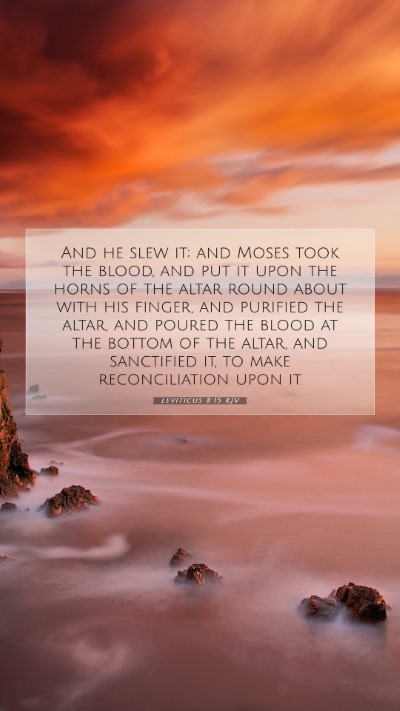Understanding Leviticus 8:15
Leviticus 8:15 describes a significant event in the context of the consecration of Aaron and his sons as priests in the Israelite tradition. This verse states:
"And he killed it; and Moses took the blood, and put it upon the horns of the altar round about with his finger, and purified the altar, and poured the blood at the bottom of the altar, and sanctified it, to make reconciliation upon it."
Bible Verse Meanings and Interpretations
The act of offering the sacrifice and the application of blood is deeply rooted in the sacrificial system established in the Old Testament. Here is an overview of the essential meaning and interpretation of Leviticus 8:15 from various public domain commentaries:
- Matthew Henry's Commentary: Matthew Henry emphasizes the significance of the blood in the sacrificial system, highlighting that it represents atonement and the vital need for purification. The act of sprinkling blood on the altar signifies God's acceptance of the sacrifice and the purification of the sacred space where worship takes place.
- Albert Barnes' Notes: Albert Barnes elaborates on the symbolism of blood in the context of atonement. He notes that the blood represents life and signifies the seriousness of sin and the requirement for a life, or a life for a life, in the context of reconciliation with God. The altar symbolizes the place where God meets with His people.
- Adam Clarke’s Commentary: Adam Clarke highlights the ritual aspect of this event, noting that the procedures of consecration were mandated by God to maintain holiness among His people. Clarke points out that the act of sanctifying the altar with blood serves as a foreshadowing of Christ's ultimate sacrifice, which fulfills the need for reconciliation beyond the Old Testament sacrificial system.
Key Insights on Leviticus 8:15
- The act of purification through blood sacrifice illustrates the theme of atonement present throughout Scripture, underscoring the need for reconciliation between a holy God and sinful humanity.
- This ritual underscores the seriousness of the priestly role, demonstrating that those who serve before God must be consecrated and purified through blood.
- The procedure signifies an essential step in establishing the tabernacle worship, reflecting God's desire for a relationship with His people, attained through sacrificial means.
- Understanding the sprinkling of blood as a sanctifying act helps Christians draw parallels to New Testament teachings, particularly regarding Jesus as the ultimate High Priest and His sacrificial death for humanity's sins.
Application of Leviticus 8:15 in Daily Life
When examining the practical implications of Leviticus 8:15, several points arise:
- This verse teaches the concept of holiness and the profound implications of sin, urging believers to approach God with reverence and purity.
- The ritual emphasizes the importance of confession and repentance, acknowledging our need for forgiveness and reconciliation in our relationship with God.
- Understanding the sacrificial system enhances appreciation for Christ's sacrificial work, motivating believers to live a life of gratitude and service in response to His love.
Bible Cross References
- Hebrews 9:22 - "And almost all things are by the law purged with blood; and without shedding of blood is no remission."
- Exodus 24:8 - "And Moses took the blood, and sprinkled it on the people, and said, Behold the blood of the covenant, which the LORD hath made with you concerning all these words."
- Leviticus 16:15 - "Then shall he kill the goat of the sin offering, that is for the people, and bring his blood within the vail, and sprinkle it upon the mercy seat, and before the mercy seat."
This analysis of Leviticus 8:15 offers valuable insights into the sacrificial system and its implications for understanding the broader narrative of Scripture, particularly in relation to the reconciliation between God and humanity. As you study this verse, consider its theological and practical applications in your life and community.


